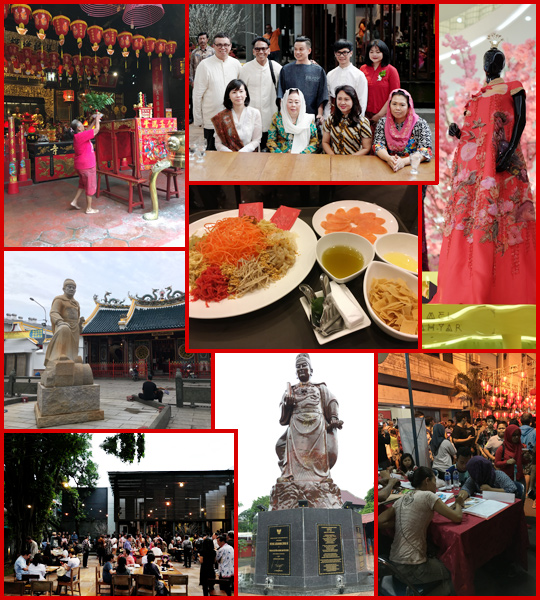
A Rooster Year for Everyone Around
Published by Sugar & Cream, Friday 10 February 2017
Text by Lynda Ibrahim, Photography courtesy of each Mel Ahyar and Lynda Ibrahim
The Year of Rooster 2568 rang in recently, celebrated widely in Indonesia by the Chinese-decent citizens and, increasingly in recent years, Indonesians with no Chinese heritage. Beyond ceremonies in temples and lion dances at malls, celebrations have taken quite interesting forms.
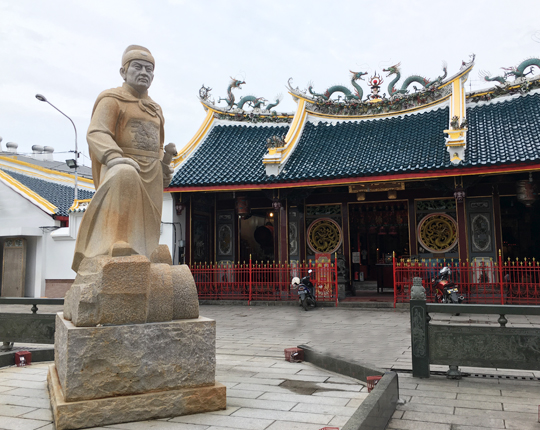
Klenteng Taykaksie
In culinary for example, there’s a revived interest in yu-sheng (sometimes pronounced yee-sang), the celebratory meal consists of various salad and a type of fish, commonly salmon, stirred by plum sauce and sparkled with fried-to-golden crackers. The veggies represent fertile nature, the word “fish” in Chinese sounds similar to the word “abundance”, sauces represent grease needed in business, while the crackers represent gold. All the ingredients are mixed gradually, each step is preceded by a wish, usually for wealth or health, and the ritual is ended with all participants stirring the meal with chopsticks high off the plate to ‘send’ the wishes to Heaven. As ancient Chinese calendar is rooted in movements of Moon, yu-sheng meal can only be carried out until the first full moon of the Lunar New Year (often called Cap Go Meh, the 15th night, in Indonesia).
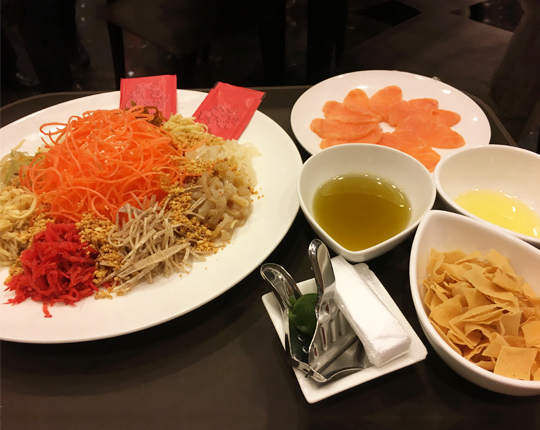
Yu-Sheng
Whether modern people still believe in the symbols featured in yu-sheng is questionable, so it’s more likely that the revival interest in yu-sheng, offered as a packaged meal in nice Chinese restaurants at downtown Jakarta malls, is of cultural curiosity.
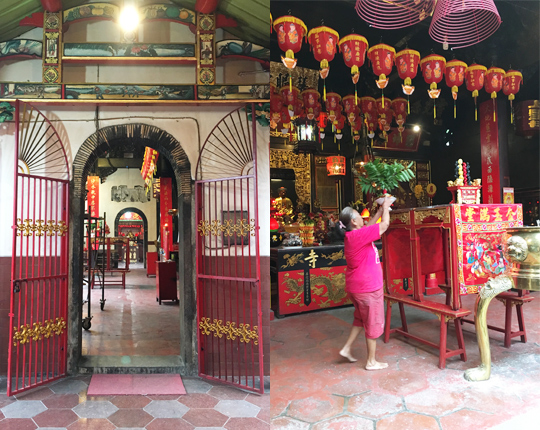
Klenteng Taykaksie
Cultural and historical curiosities have also excited Indonesian fashion scene. More than just launching the usual Imlek collection of high-necked pieces in obligatory red color, some of the renowned designers pored history books to draw inspirations for exhibitions.
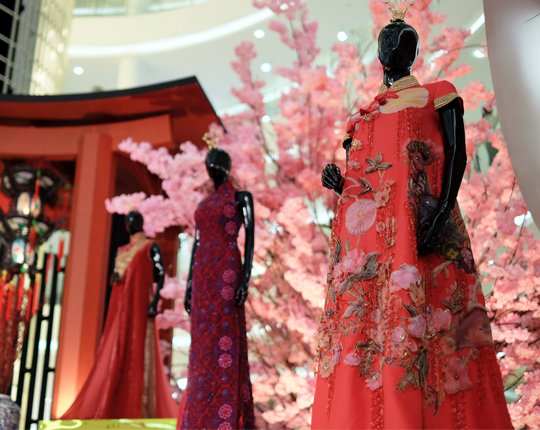
Mel Ahyar – Dress, Senayan City Jakarta
Mel Ahyar, who has counted Indonesian ancient kingdom Sriwijaya as a source of inspiration, this time dug deep into the 7th century China when a woman, Wu Zetian, started the Zhou Dynasty and reigned for 15 years. Aside from Dowager Empress Cixi of Qing Dynasty, who brought China into modernity in late 19th century by swaying power for decades behind child emperors, Empress Wu Zetian was the only woman ever to rule Imperial China in its 4,000-year history. Mel Ahyar’s interpretation of Wu Zetian has been included in the fashion installations at the center of Senayan City, along with impressive designs by the likes of Sebastian Gunawan, Rinaldy A. Yunardy, Andreas Odang and Sapto Djojokartiko
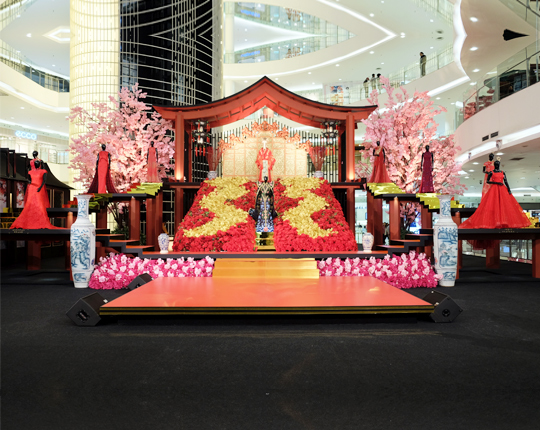
Senayan City, Jakarta
A different route of memory lane is taken by Didi Budiardjo, Edward Hutabarat and Adrian Gan, who chose to draw inspiration from Tiga Negeri batik—a particular batik practice dating back to northern coastal Java during Dutch colonial times, when Chinese-descent batik makers started to get into the market and brought their heritage along. Tiga Negeri (= three countries) batik was traditionally hand-drawn in three cities—Lasem for red color and phoenix motif, Pekalongan for blue color and flower motif, and Solo for brown color and geometric motifs. In their exhibition at Dia.Lo.Gue gallery recently, the three designers featured ready-to-wear batik designs alluring to the three origins of Tiga Negeri.
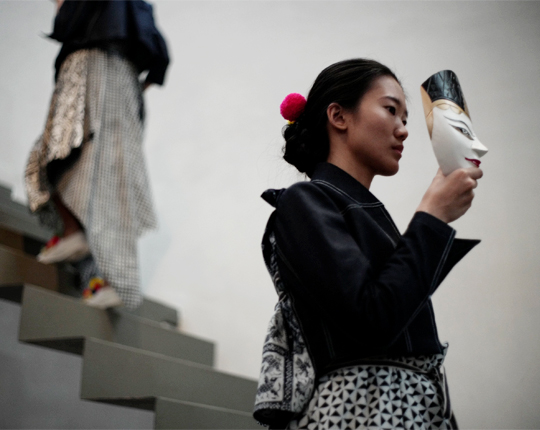
Adrian Gan, image courtesy of Davy Linggar
Didi Budiardjo, in particular, paid homage to Oei Hui Lan, one of the 42 recognized children of sugar baron Oei Tiong Ham, whose business empire at the beginning of 20th century flourished from Semarang to much of the Southeast Asia. So powerful was Oei Tiong Ham at the time that in Brussels in 1921 a daughter of his could marry the dashing and American-educated Wellington Koo, China’s top diplomat and first representative to the United Nations.

Adrian Gan & Didi Budiardjo courtesy of Davy Linggar
It was Wellington Koo’s third marriage, and he’d have another marriage afterwards, yet it was during this union with Oei Hui Lan that Wellington Koo was flying high in his international career that his wife, blessed with lovely looks and fashion flair to insert Chinese-Javanese Peranakan elements into Western dresses, roamed the high society and was forever known as “Madame Koo”.
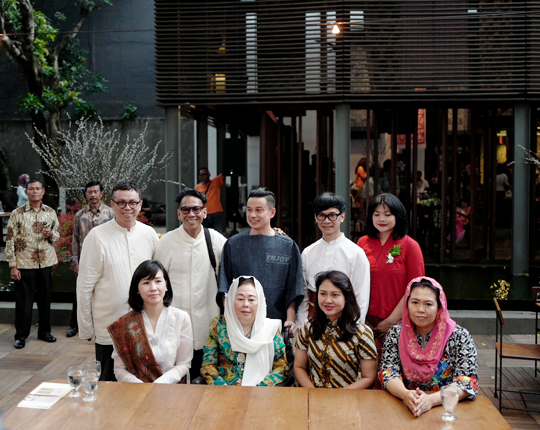
Hermawan Tanzil, Edo Huta Barat, Andrian Gan, Didi Budiardjo, Engel Tanzil
Veronica Tan, Shinta Nuriah, Happy Farida, Yenny Wahid, image courtesy of Davy Linggar
Northern coastal Java is indeed one of the earliest recorded settlements of Chinese immigrants in Nusantara, centuries before the islands became Republic of Indonesia in 1945. Semarang, from where Oei Tiong Ham hailed, had been one of the long stops of the legendary Admiral Zheng He (1371-1435). A grand temple of Khonghucu (a mix of Confucian and Tao beliefs popular in much of Southeast Asia) called Sam Poo Kong, dedicated to Admiral Zheng, stands to this day in Semarang, serves as one of the city’s main tourist attractions and its designated Lunar New Year celebration where thousands of locals, regardless of religion and ethnicity, flocked on January the 28th to welcome the Year of Rooster 2568.
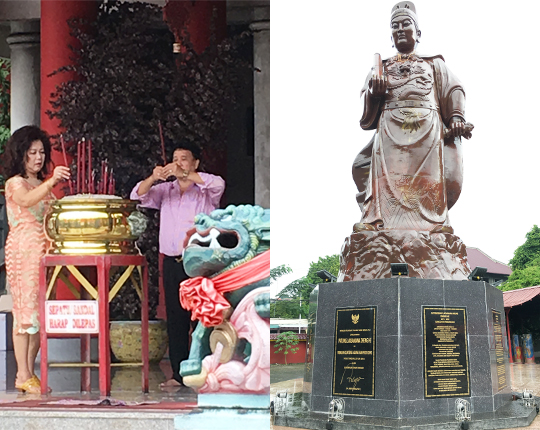
Sam Poo Kong
Days before the festival in Sam Poo Kong, celebrations were carried out in Pecinan (Chinatown) in the heart of Semarang, where night market Pasar Semawis were filled by food stalls, clothing sellers, tax amnesty consultants, and even temporary tattoo artists—where I saw a local woman in Muslim hijab nonchalantly getting a temporary tattoo in her arm. Relaxed relationships regardless of ethnicity or religion was visibly abound as everyone enjoyed performances offered by wayang potehi and wayang tavip troupes—the first similar to Javanese puppet shows, the latter Betawi ondel-ondel—just as the same quiet harmony was demonstrated by men without any trace of Chinese heritage in their appearance working in nearby Tay Kak Sie temple (ca. 1746) to prepare for Lunar New Year.
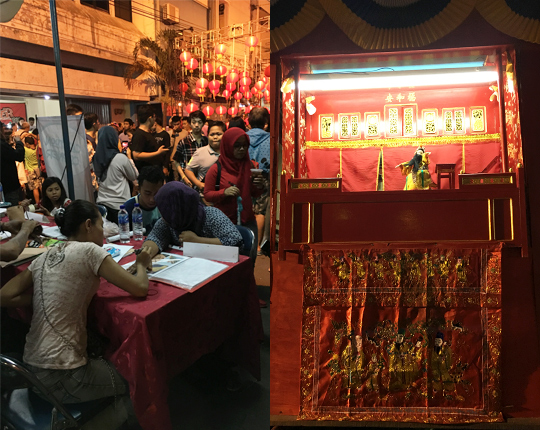
Pasar Semawis
Deep-rooted misunderstandings and heated arguments are still found around, especially nowadays in Jakarta where politics and vested interests have come to play for the Gubernatorial Election, yet as I logged off social media to travel, the real people I met in real life gave me hope. Perhaps the Rooster will be kinder than the Monkey, after all.
Gong xi fa cai, everyone.
 2.30K
18/07/2025
2.30K
18/07/2025
SCULPTED BY NATURE: ALEXANDER LAMONT’S XXV COLLECTION
Alexander Lamont’s XXV Collection is a masterful tribute to nature and craftsmanship, where sculptural forms and exquiste materials converge in...
read more 527
18/07/2025
527
18/07/2025
CRÜ CORNER BISTRO AT KEMANG JAKARTA
A restaurant that embodies the idea of a bistro with a European flair, CRÜ Corner Bistro is a new culinary destination for foodies and provides a cozy...
read more 42.74K
11/07/2025
42.74K
11/07/2025
PELUNCURAN PERDANA LEGANO HOME MENGGANDENG AGAM RIADI DI ST REGIS RESIDENCE JAKARTA
Peluncuran perdana LEGANO HOME menggandeng Agam Riadi di St. Regis Residence Jakarta: menyatukan kemewahan dan jiwa dalam sebuah ruang.
read more 16.04K
04/07/2025
16.04K
04/07/2025
URBANJOBS UNVEILS INTERIORS FOR THE SCALLA RESTAURANT
SCALLA, a posh restaurant with a Mediterranean flair located in Istanbul's famed Beykoz neighborhood, has its interiors unveiled by URBANJOBS.
read more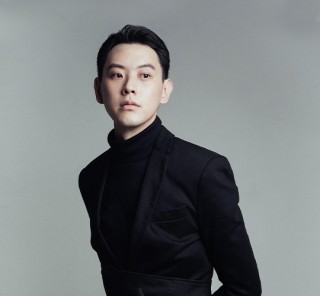 75.36K
10/01/2025
75.36K
10/01/2025
W RESIDENCE IN SOUTH JAKARTA BY MICHAEL CHANDRA
Michael Chandra, founder of MNCO Studio Design has created the W Residence with an aesthetically pleasing, practical, and pleasant home from all...
read more 42.74K
11/07/2025
42.74K
11/07/2025
PELUNCURAN PERDANA LEGANO HOME MENGGANDENG AGAM RIADI DI ST REGIS RESIDENCE JAKARTA
Peluncuran perdana LEGANO HOME menggandeng Agam Riadi di St. Regis Residence Jakarta: menyatukan kemewahan dan jiwa dalam sebuah ruang.
read more













